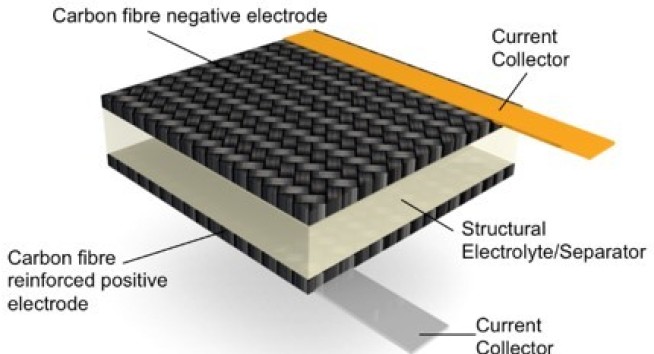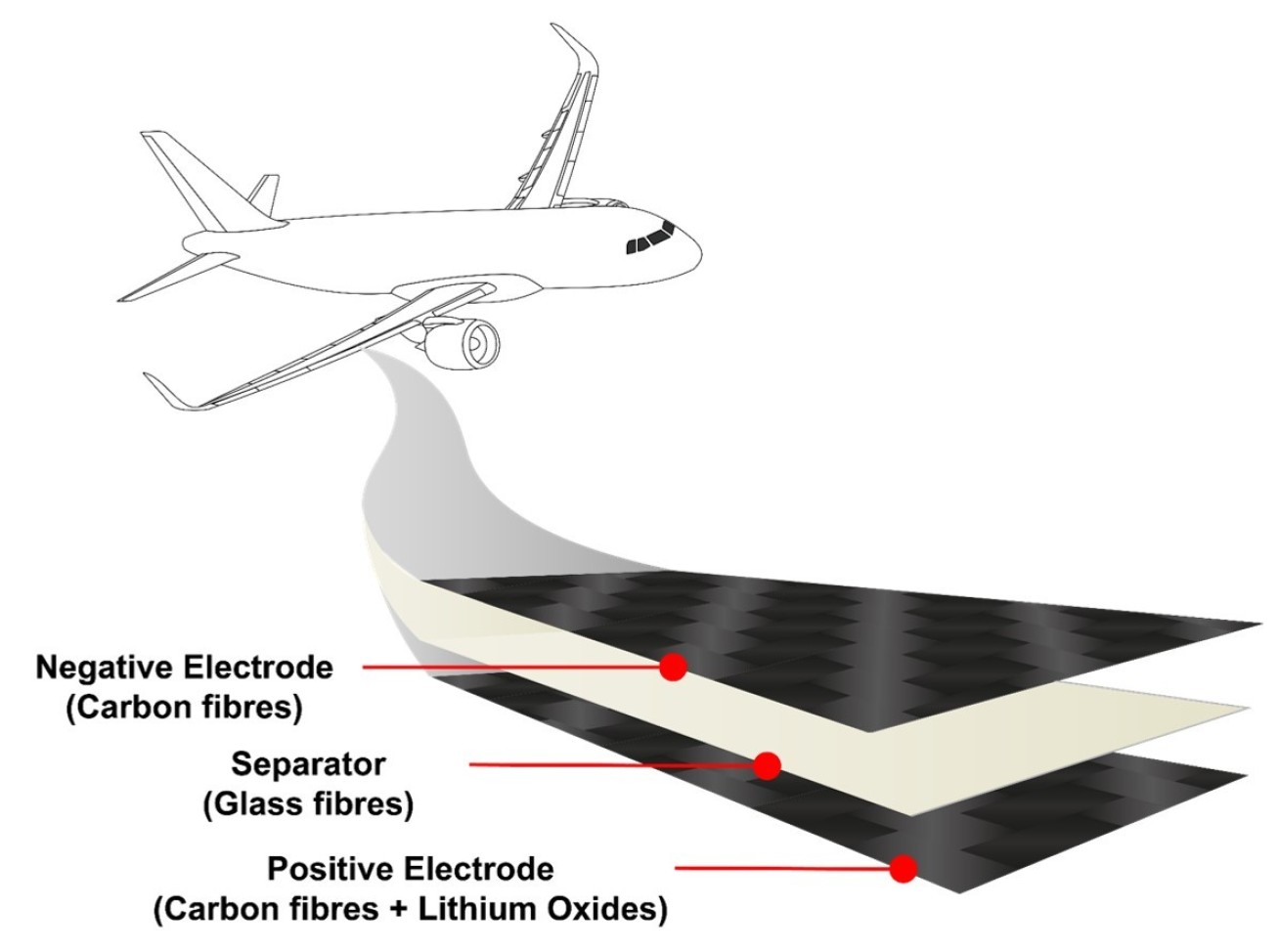
Structural batteries are hybrid and multifunctional composite materials able to carry load and store electrical energy in the same way as a lithium ion battery. In such a device, carbon fibres are used as the primary load carrying material, due to their excellent strength and stiffness properties, but also as the active negative electrode providing the energy storage functionality. Structural batteries can be made using a traditional laminated battery architecture similar to that of a fibre reinforced polymer composite laminate in which the positive electrode is also reinforced with carbon fibres coated with lithium iron phosphate.

The research comprises pursuing several research tracks involving studying electrode materials (one being carbon fibres), matrix materials which provide stiffness for the composite while still being ionically conductive (structural battery electrolytes), device development, assembly, scale-up, demonstration, multiphysics modelling, design and applications. Possible ground-breaking applications for such innovative material concepts are casings for mobile phones, laptops or structural components of cars and airplanes that simultaneously carry load and store electrical energy, enabling substantial weight savings.
Further information
- Structural battery composites: A review, LE Asp, et al. Functional Composites and Structures, Volume: 1, Number: 4, Article: 042001 (2019)
- Structural batteries: A review, F Danzi et al. Molecules, 26, 2203, (2021)
- A multicell structural battery composite laminate, J Xu, et al. EcoMat. e12180 (2022)
- A Structural Battery and its Multifunctional Performance, LE Asp, et al. Advanced Energy & Sustainability Research, Volume: 2, Issue: 3, Article: 202000093 (2021)
- Performance analysis framework for structural battery composites in electric vehicles, D Carlstedt, LE Asp, Composites Part B: Engineering, Volume: 186, Article: 107822 (2020)
- Electro-chemo-mechanically coupled computational modelling of structural batteries, D Carlstedt, et al. Multifunctional Materials, Volume: 3, Number: 4, Article: 045002 (2021)
- Effect of lithiation on the elastic moduli of carbon fibres, S Duan, et al. Carbon, Vol: 185, Pages 234-241 (2021)
- A screen-printing method for manufacturing of current collectors for structural batteries, W Johannisson, et al. Multifunctional Materials, Vol: 4, Number: 3, Article: 035002 (2021)
- Prospective life cycle assessment of a structural battery, M Zackrisson, et al. Sustainability, Volume: 11, Issue: 20 (2019)
- Model of a structural battery and its potential for system level mass savings, W Johannisson, et al. Multifunctional Materials, Volume: 2, Number: 3, Article: 035002 (2019)
Related links
Contact
Professor Emile S Greenhalgh
Department of Aeronautics
Imperial College London
South Kensington Campus
London SW7 2AZ
+44 (0)7958 210 089
e.greenhalgh@imperial.ac.uk